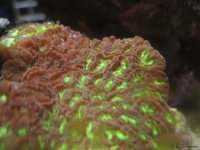A
Anonymous
Guest
It was traded as a more-than-half-dead favites.
But there's seperate walls if you look close. There's also some skeleton showing, so that should help. It might be a platygyra daedelea. That's the closest pic I can find in E.Borneman. Someone have an extra copy of corals of the world sitting around they'd like to give me?
Thanks
B
But there's seperate walls if you look close. There's also some skeleton showing, so that should help. It might be a platygyra daedelea. That's the closest pic I can find in E.Borneman. Someone have an extra copy of corals of the world sitting around they'd like to give me?
Thanks
B







